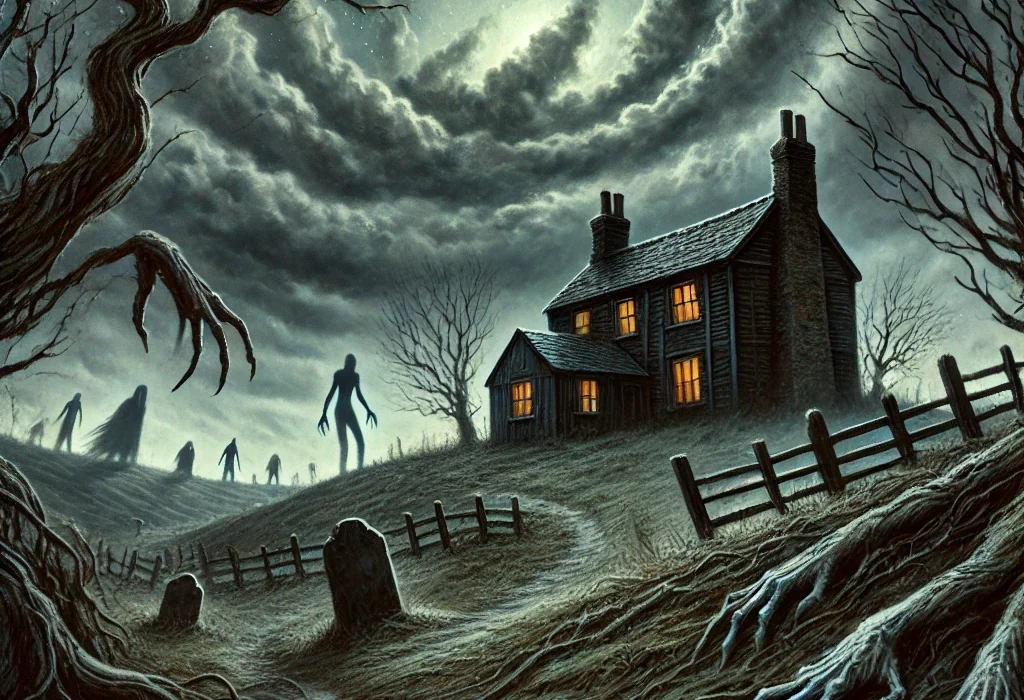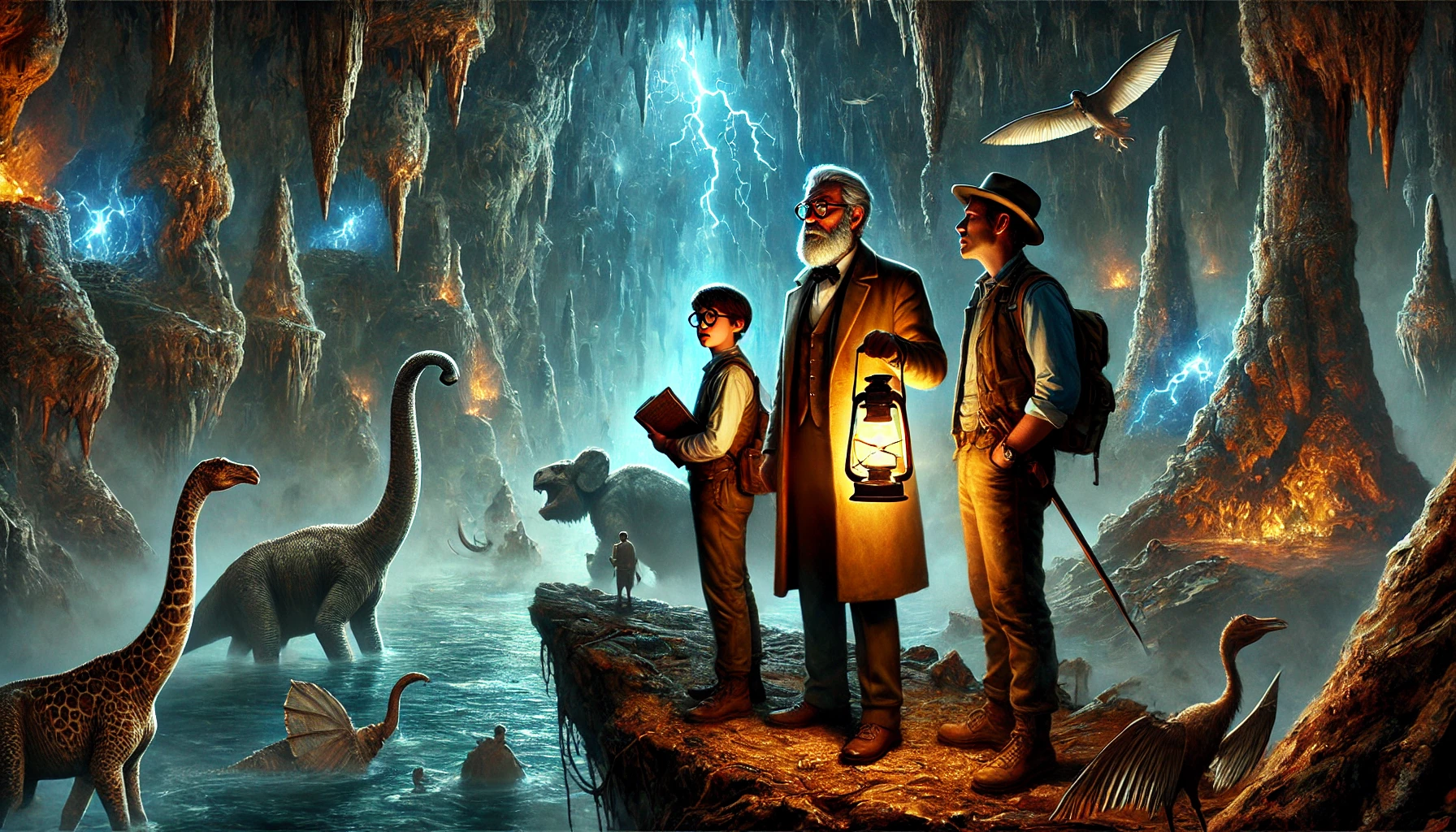“The Dunwich Horror” by H.P. Lovecraft, published in 1928, is a seminal piece of cosmic horror that intertwines elements of the supernatural with the decaying rural landscape of New England. Lovecraft, known for his creation of the Cthulhu Mythos, crafts a tale that delves into forbidden knowledge and the terrifying entities lurking beyond human comprehension. The story is set in the fictional town of Dunwich, Massachusetts, a place shunned by outsiders due to its eerie atmosphere and the strange occurrences that plague its inhabitants.
Comprehensive Plot Summary
In the remote and decaying town of Dunwich, Massachusetts, the Whateley family, comprising the albino Lavinia and her grotesque father, Old Whateley, live in a dilapidated farmhouse. On Candlemas of 1913, amidst the howling of dogs and strange noises from the hills, Lavinia gives birth to a son, Wilbur, whose father is unknown. The townspeople are unsettled by Wilbur’s rapid growth and unusual appearance; he speaks at a remarkably young age and exhibits an intelligence far beyond his years.
The Whateleys, known for their sinister reputation, are shunned by the locals. Old Whateley, a practitioner of dark rituals, begins extensive renovations on their farmhouse, boarding up windows and constructing a mysterious upper room. The Whateleys engage in bizarre ceremonies on the nearby Sentinel Hill, involving ancient tomes and unholy invocations. As Wilbur matures, he becomes even more monstrous in appearance and demeanor, feared and reviled by the townsfolk.
Wilbur’s grandfather dies in 1924, leaving him to carry on their dark legacy. Wilbur’s primary focus becomes obtaining a complete copy of the “Necronomicon,” a forbidden grimoire that contains the secrets to unlocking the gates to otherworldly dimensions. In 1928, Wilbur travels to Miskatonic University in Arkham to consult their copy of the “Necronomicon,” but he is denied access by Dr. Henry Armitage, the head librarian.
Desperate, Wilbur attempts to steal the book but is fatally wounded by the university’s guard dog. When Armitage and his colleagues, Dr. Francis Morgan and Professor Warren Rice, examine Wilbur’s dying body, they discover it is only partly human, covered in scales and tentacles, indicating his otherworldly lineage. The death of Wilbur does not end the terror. Shortly after, strange occurrences escalate in Dunwich. The Whateley farmhouse is destroyed, and monstrous footprints are found leading from the ruins. A colossal, invisible entity roams the countryside, causing widespread destruction. Armitage, Morgan, and Rice travel to Dunwich to confront this unseen horror.
As they arrive in Dunwich, the signs of the entity’s rampage are evident. Buildings lie in ruins, and the landscape bears the marks of an enormous creature. The townspeople, gripped by fear, recount their experiences of the nightmarish events. The invisible terror seems to be connected to the ancient rituals performed by the Whateleys. Using ancient spells from the “Necronomicon,” Armitage and his colleagues manage to make the entity visible, revealing it to be a gigantic, grotesque creature with features resembling both Wilbur and the mythical Old Ones. The creature’s form is a horrifying blend of human and alien characteristics, covered in scales, tentacles, and other monstrous appendages.
The confrontation with the creature is a harrowing battle of wits and occult knowledge. Armitage and his companions chant incantations, wielding their arcane knowledge against the monstrous being. The air crackles with eldritch energy as they struggle to contain the horror. The creature’s roars shake the very ground, and its tentacles lash out, seeking to grasp and crush its adversaries. The men press on, their determination fueled by the knowledge that failure would mean doom for all humanity.
Finally, through a combination of ancient spells and sheer willpower, they manage to banish the creature back to its own dimension. The air shimmers with residual energy as the monstrous entity fades from view, leaving behind a sense of profound relief and lingering dread. The knowledge of what they have witnessed, and the realization that such horrors exist just beyond the veil of reality, weighs heavily on their minds.
With the immediate threat vanquished, Armitage, Morgan, and Rice take stock of the situation. The townspeople, though still shaken, begin to emerge from their homes, cautiously approaching the men who have saved them. The destruction wrought by the creature is extensive, and the rebuilding of Dunwich will take time. The Whateley farmhouse, now a smoldering ruin, stands as a grim reminder of the darkness that had taken root in the town.
The trio returns to Miskatonic University, where they carefully store the “Necronomicon” and other ancient texts, aware of the dangers they contain. They vow to remain vigilant, knowing that the forces they have encountered are ever-present, lurking in the shadows, waiting for another chance to break through into our world. The events in Dunwich serve as a stark warning, a testament to the thin boundary between reality and the unfathomable horrors that lie beyond.
Dr. Armitage, reflecting on the ordeal, writes detailed accounts of the events, ensuring that future generations are aware of the lurking threats. He corresponds with other scholars, sharing his findings and urging them to exercise caution when dealing with forbidden knowledge. The legacy of the Dunwich Horror becomes part of the university’s hidden archives, a dark chapter in the annals of occult research.
As time passes, the story of the Dunwich Horror fades into local legend, a cautionary tale told to warn against the pursuit of forbidden knowledge. Yet, for those who were directly involved, the memories remain vivid and haunting. The sense of cosmic insignificance, the realization that humanity is but a small and fragile presence in a vast, indifferent universe, lingers in their minds.
Despite the horrors they have faced, the men who confronted the Dunwich Horror are united by a sense of duty. They continue their studies, delving deeper into the mysteries of the cosmos, ever watchful for signs of the Old Ones’ return. They understand that their role is not just to gain knowledge but to protect the world from the dark forces that seek to consume it. The battle against the unknown continues, a relentless struggle that defines their lives and shapes their destinies.
Main Characters
- Wilbur Whateley: The central figure of the story, Wilbur is a half-human, half-otherworldly being whose rapid growth, intelligence, and grotesque appearance set him apart from the townspeople. His life is dedicated to unlocking the secrets of the “Necronomicon” and summoning the Old Ones.
- Old Whateley: Wilbur’s grandfather, a practitioner of dark rituals and keeper of forbidden knowledge. His death marks a significant turning point in the story, leaving Wilbur to continue their unholy mission.
- Dr. Henry Armitage: The head librarian at Miskatonic University, Armitage is a learned scholar who recognizes the danger posed by Wilbur and the “Necronomicon.” He plays a crucial role in confronting and banishing the Dunwich Horror.
- Lavinia Whateley: Wilbur’s mother, an albino woman shunned by the community. Her mysterious background and involvement in dark rituals contribute to the story’s eerie atmosphere.
Themes and Motifs
- Forbidden Knowledge: The pursuit of hidden and dangerous knowledge, exemplified by the “Necronomicon,” drives the narrative and leads to the unfolding horror.
- Cosmic Horror: The story explores the insignificance of humanity in the face of ancient, malevolent cosmic entities that exist beyond human understanding.
- Decay and Degeneracy: The physical and moral decay of the Whateley family and the town of Dunwich reflect the corrupting influence of the supernatural forces at play.
- Isolation: Both the physical isolation of Dunwich and the social isolation of the Whateleys amplify the story’s sense of dread and otherworldliness.
Writing Style and Tone
Lovecraft’s writing style in “The Dunwich Horror” is characterized by elaborate descriptions, a formal tone, and a pervasive sense of dread. His use of archaic language and detailed, almost clinical descriptions of the grotesque elements enhances the story’s atmosphere of cosmic horror. The narrative unfolds through a combination of first-person accounts, third-person omniscient narration, and excerpts from fictional documents, creating a layered and immersive reading experience.
The tone of the story is one of inevitable doom and creeping terror. Lovecraft masterfully builds suspense through hints and foreshadowing, leading to the climactic revelation of the monstrous entity. The story leaves readers with a lingering sense of unease, as the boundaries between reality and the supernatural are blurred, and the true scale of the cosmic horror is only partially revealed.
If this summary has sparked your interest, we would appreciate you subscribing to our newsletter.
There’s a treasure trove of other fascinating book summaries waiting for you. Check out our collection of stories that inspire, thrill, and provoke thought, just like this one by clicking here.
If you want to request a book summary, click here.
When Saurabh is not working/watching movies/reading books/traveling, you can reach him via Twitter/X, or LinkedIn.
Restart reading!






